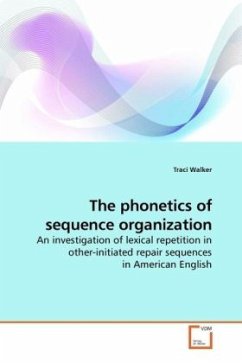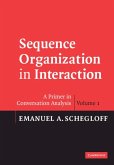This thesis investigates the interrelationship of phonetic structure and sequence organization in talk-in-interaction. It integrates the methodology of Conversation Analysis and impressionistic and instrumental phonetics to show how activities in a conversation are managed and oriented to by the participants. The study examines the phonetic characteristics of repetition in other-initiated repair sequences. Phonetic analysis of the repairs contradicts both published accounts of the phonetic correlates of clear speech, and descriptions of the phonetics of repetitions; instead, the combination of sequential and phonetic analysis reveals that speakers manipulate clusters of phonetic parameters to negotiate who is `at fault' for a conversational breakdown. This work highlights the indispensable role of the phonetic level of organization in the collaborative resolution of problematic sequences of talk. It supports a growing body of work showing that attention to phonetic detail is as important as attention to sequential organization in understanding the orderliness in everyday talk-in-interaction.
Bitte wählen Sie Ihr Anliegen aus.
Rechnungen
Retourenschein anfordern
Bestellstatus
Storno








